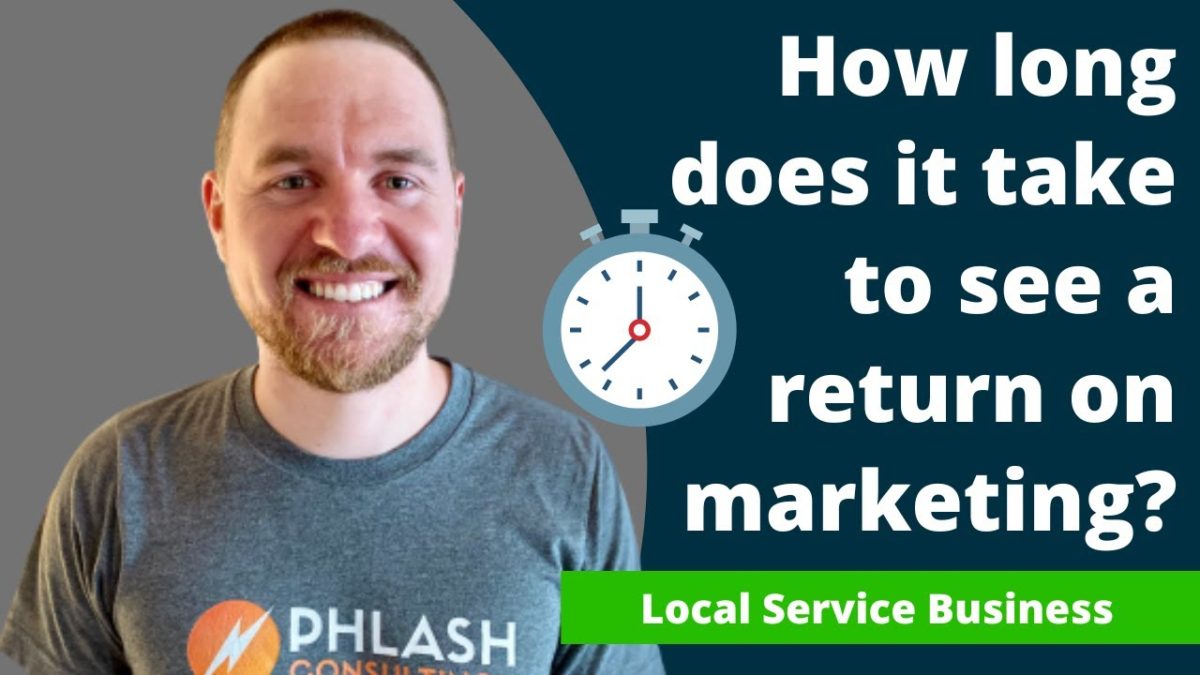How long does it take to see a return on marketing?
Any good business will ask this question when “spending money to make money”, but the answer is not so simple. It depends on your marketing strategy and the type of investment you’re looking at. There are three things to consider when trying to calculate your marketing ROI (return on investment):
What is a good marketing ROI?
The most important thing to know about ROI is that it’s a ratio between profit and marketing cost. So if you have an advertising budget of $10,000, and your company makes $20,000 in sales from those ads, your ROI is 2:1 ($20,000 / $10,000). The higher the number goes on both sides of the equation (profit and cost), the better.
If you want to be really successful at marketing your business online—and who doesn’t?—then you’ll want to aim for an average 5:1 return on investment or higher. And if one day you come across a marketing channel that has a 10:1 return rate, you should focus on getting as much money into that if you are looking to grow.
Different types of marketing affect ROI
There are four main types of digital marketing: SEO (Search Engine Optimization), Digital Ads, Email/Text, and Social Media. Each has its own pros and cons for measuring ROI.
Search Engine Optimization ROI
Search engine optimization is a long-term play that typically take 6-12 months, but can deliver 10x+ ROI if done properly. It’s worth it if you have the patience to do it right! The reason the ROI can be so high is that when Google refers a business, most searchers trust googles results and are looking for the best company. Unlike some ads, these are people searching for your product and service already.
Digital Advertising ROI
Digital ads, like Google Adwords and Facebook Ads, can see a return in as little as month month and can typically see 3-5:1 return if done properly. It is very important to track revenue all the way through to completed work, a lot of ad companies want to show an ROI on “leads” or even worst “reach”. Not all leads are created equal, and not all reach is good reach. Digital ads can be a quick way to “get leads”, but may not be the best for ROI.
Email & Text Marketing ROI
Email & text marketing is a quick way to see a 5-10:1 return on spend from targeting past customers and prospects to refill your pipeline with leads that already know, like, and trust you. Not only can it be a high ROI strategy, it can also be implemented within 1 month which makes it fast, relatively inexpensive, and good. This is not a strategy for “new business”, mostly for reengaging past customers.
Social media marketing ROI
This can be hard to quantify because there isn’t always direct correlation between likes or followers with actual sales so just keep that in mind when thinking about investing time into building up those numbers without any additional value being added as well (like leads generated).
How to track marketing ROI and performance?
There are a number of tools available to track the success of your marketing campaigns. Here’s a list of some that you should consider using:
- A good CRM (customer relationship management) system will help you keep track of all interactions with customers. You can also use it to manage contacts, send automated emails and create personalized follow-up messages based on what they interact with or buy from you.
- A good analytics tool is essential for measuring the effectiveness of your strategies and tactics. This may mean looking at how many people visited your website, how long they stayed there and what kinds of pages they looked at before leaving. It could also include information about the number of emails sent out or how often specific posts were liked on social media channels like Facebook or Twitter.
- A good marketing automation tool allows businesses to automate certain processes such as segmentation by location so that emails are sent only when someone requests something specific in their area (for example: if someone lives nearby). This saves time while reducing unnecessary wastage due to misdirected messages being sent out unnecessarily through traditional mailing lists which would not necessarily be relevant unless specified otherwise beforehand by an individual user themselves beforehand via previous interaction history between website visitor(s) & business owner(s).
Conclusion
The goal of marketing is to drive sales and generate a return on investments. So, the question is how long does it take before you make a profit from your marketing efforts? We hope that after reading this article, you’re better equipped to answer this question.
Recent Posts
- I Helped 3 Home Service Companies Exit to Private Equity: Here’s What I Learned
- We Stopped Google Ads and TRIPLED Revenue in 12 Months
- How to sell your home service business for the most money
- 0 to $5 Million By Creating Raving Fans in Your Business
- How to do Return on Ad Spend Reporting Using Jobber

